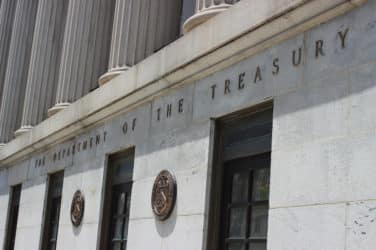Here is a new, election-focused report from Société Générale that examines the potential impact of the U.S. presidential election on the U.S. economy and monetary policy. Authored by Subadra Rajappa, SocGen’s head of US Rates Strategy, the report takes a close look at the impact of policies put forth by both candidates and the potential impact on rates markets.
Key Findings:
– A Democratic win would be bullish for rates markets, while a GOP win would be bearish, according to the anecdotal evidence and in line with the general perception of Democrats as being historically less friendly towards financial markets. Also, in previous election cycles, there was some support for volatility in periods when the gap between candidates closes, and a decrease in volatility in the month after the election relative to the month prior.
– The US budget deficit is likely to increase over the next ten years, regardless of who wins. Additional spending proposals by Democratic nominee Hillary Clinton and Republican nominee Donald Trump’s new tax plan without proposals for spending cuts are likely to exacerbate the situation.
– Relative to GDP, the US deficit will likely double from 2.5% to 4.9% over the next ten years. Revenues remaining relatively unchanged, increases in mandatory spending from 12.9% to 15% and net interest increasing from 1.3% to 3% of GDP are the key contributors.
– That said, an increase in the deficit and Treasury supply would have a small impact on Treasury yields over the coming years. With the ECB, BoJ and now the BoE engaged in asset purchases, the sharp increase in demand for Treasuries from overseas accounts is a key driver of yields.
– No rate hike before the election; the hurdle is too high. Expect more clues on the timing of the next rate hike at Fed Chair Janet Yellen’s speech at the annual Jackson Hole meeting, but a rate hike prior to the election is likely to induce volatility, especially since the recent data do not present a compelling case to do so.
The Full report can be accessed here:




